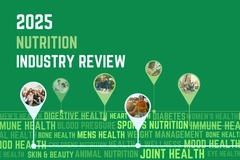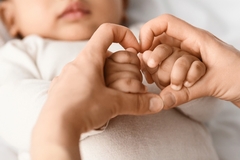
- Industry news
Industry news
- Category news
- Reports
- Key trends
- Multimedia
Multimedia
- Journal
- Events
- Suppliers
Suppliers
- Home
- Industry news
Industry news
- Category news
- Reports
- Key trends
- Multimedia
Multimedia
- Events
- Suppliers
Suppliers
Soy Isoflavone Genistein Maybe a Cost-Effective Nutritional Approach to Decrease Gastrointestinal Illness

In the study, cells in culture were exposed to rotavirus in the absence or presence of soy isoflavones, biologically active compounds in soy that are thought to have health benefits.
19/09/07 The soy isoflavone genistein - at concentrations present in soy infant formula - may reduce a baby’s susceptibility to rotavirus infections by as much as 74 percent, according to a University of Illinois study published in September’s Journal of Nutrition.
“Rotavirus is the primary cause of diarrhea in infants, affecting virtually all children before age five. In the United States, it can lead to dehydration, doctor’s visits, and parents missing work to care for sick children. In developing countries, though, rotavirus causes approximately 611,000 deaths each year,” said Sharon Donovan, professor of nutrition and health at University of Illinois.
Although rotavirus vaccines have recently become available, they are expensive and cannot be given to some infants, she said.
“It’s exciting to think that the isoflavones in soy formula could be a cost-effective nutritional approach to decreasing the incidence and severity of rotavirus infections, especially among children in developing countries who are most at risk,” said Donovan.
In the study, cells in culture were exposed to rotavirus in the absence or presence of soy isoflavones, biologically active compounds in soy that are thought to have health benefits. Soy contains a number of different forms of isoflavones, and all were tested individually and as the complete mixture present in infant formula.
“Genistein and the mixture significantly reduced rotavirus infectivity by 33 to 74 percent,” she said. “But when genistein was taken out of the mixture, anti-rotavirus activity was lost, suggesting that it is the active component in reducing infectivity.”
“We then exposed the cells to different concentrations of rotavirus. If an infant had a severe infection or was exposed to a lot of rotavirus, we wondered if the isoflavones would still be as effective,” she said.
The inhibition held up across a 16-fold range of rotavirus exposure. “Even at the highest concentration of rotavirus particles, genistein or the mix of isoflavones inhibited infectivity,” said Donovan.
The study was funded by the U.S. Department of Agriculture and the Illinois Soybean Association.











